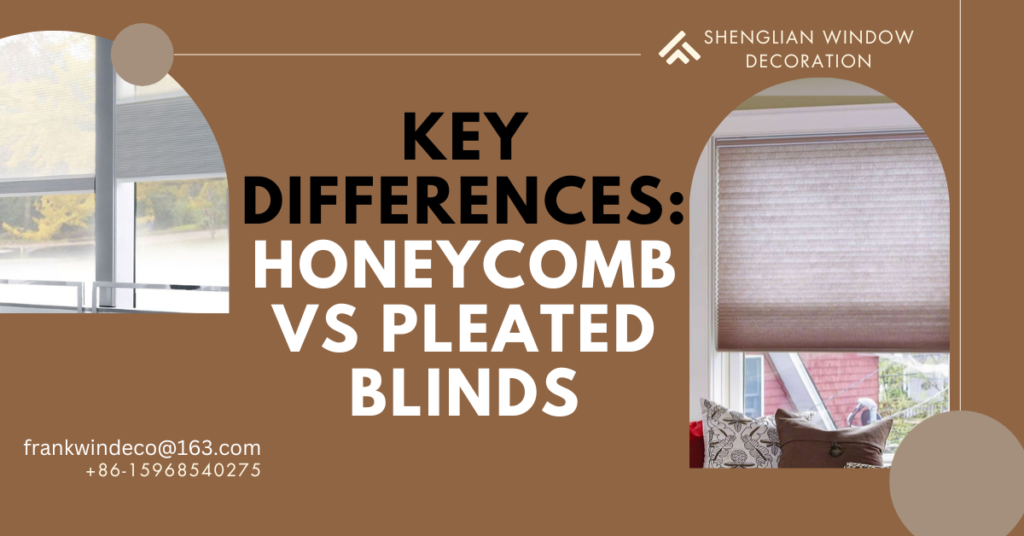Introduction
Honeycomb and pleated blinds are two of the most popular choices for blind lovers. Both have their advantages, but they have some differences that you should know before purchasing because these dissimilarities can make a big impact on your home’s energy efficiency, style, and comfort. If you want to improve insulation in your home, control light, or change the overall look of your living space, this piece of information will help you make the right choice.
This guide will present a detailed comparison between “Key Differences: Honeycomb vs Pleated Blinds” but before diving deeper, let’s have a quick look at their key differences:
Table: “Key Differences: Honeycomb vs Pleated Blinds”
| Honeycomb Blinds | Pleated Blinds | |
| Insulation Rating | ★★★★★ | ★★★★☆ |
| Cost | Moderate to High | Low to moderate |
| Best For | Maximum insulation, modern homes | Budget-friendly energy savings |
Let’s discuss both types in detail now:
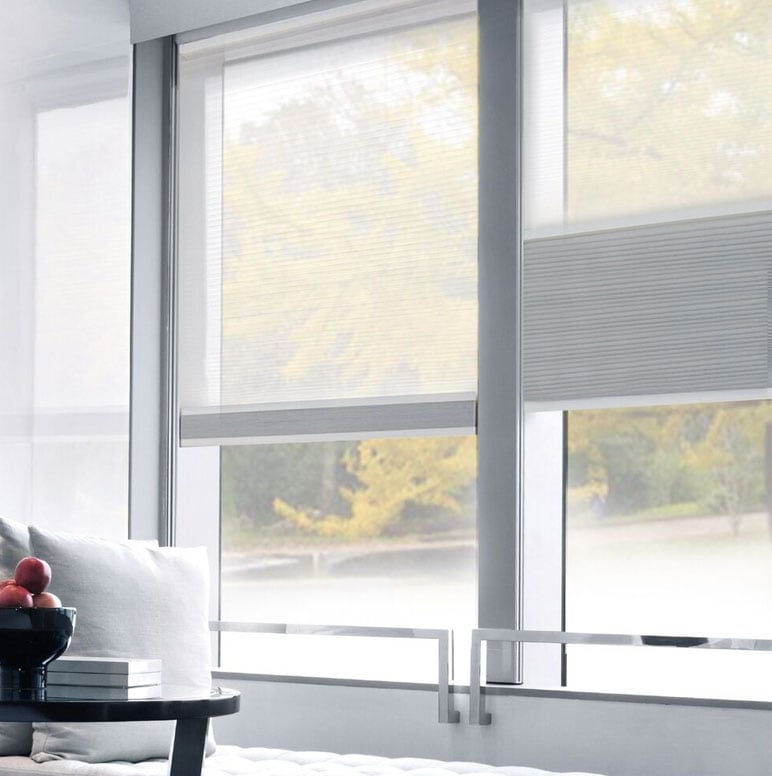

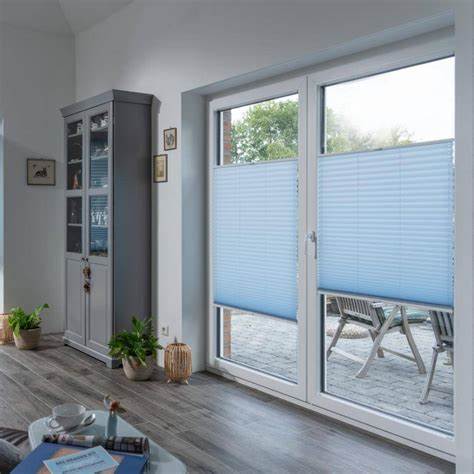
What are Honeycomb Blinds?
Honeycomb blinds, usually called cellular shades, are a popular window covering. These blinds are well known for their variety of styles and colors, unique design, and exceptional energy efficiency. Honeycomb blinds are often considered the best blinds for insulation because of their distinguishing honeycomb-like structure that catches the air in its pockets, and provides better insulation that keeps your home cooler or warmer according to the weather. They provide wonderful thermal control, brilliant light filtering, and privacy.
Benefits of Honeycomb blinds
- Energy Efficiency: The cellular design traps the air and acts as a buffer against temperature changes. This quality of honeycomb blinds makes them idyllic for improving insulation in your home.
- Light Control: It is very easy to regulate them to block the light completely or filter it for a softer ambience effect.
- Privacy: Their design provides full coverage and maximum privacy when it comes to rooms that are found to open out to busy roads or have windows through which anyone can peek.
Drawbacks
- Cost: The elegance of the design and the high energy efficiency of the honeycomb blinds make them costly as compared to the pleated blinds.
- Weight: This honeycomb structure can make them rather heavy, which may require stronger mounting hardware, especially for the larger windows.
Cleaning Tips for Honeycomb Blinds
Honeycomb blinds require special attention to keep them effective and beautiful. Some of the pro cleaning tips are
Dusting
Use a soft cloth, a microfiber duster, or a vacuum cleaner with a soft brush attachment to remove dust and debris from the surface. Slightly dust down to prevent damaging the sensitive cells of the blinds.
Spot Cleaning
For removing small stains, make a mixture using a mild detergent with warm water and remove stains by using a soft cloth or sponge. Gently blot the stain, don’t scrub it, and make sure your cloth is damp but not dripping to stop the water from damaging the fabric.
Deep Cleaning (if needed)
Some honeycomb blinds can be washed by machine. In case they’re machine washable, remove the blinds and place them in a mesh laundry bag. Wash them on a gentle cycle in cold water, and dry them in mild air. It is also safe to use a handheld steamer to remove deep-seated dirt and wrinkles without ruining them.
Regular Care for honeycomb blinds
Turn your blinds occasionally to let in equal exposure of sunlight, thus preventing fading or uneven wearing off. To ensure that curtains work at top efficiency, avoid pulling or tugging hard to avoid straining the fabric and cells.
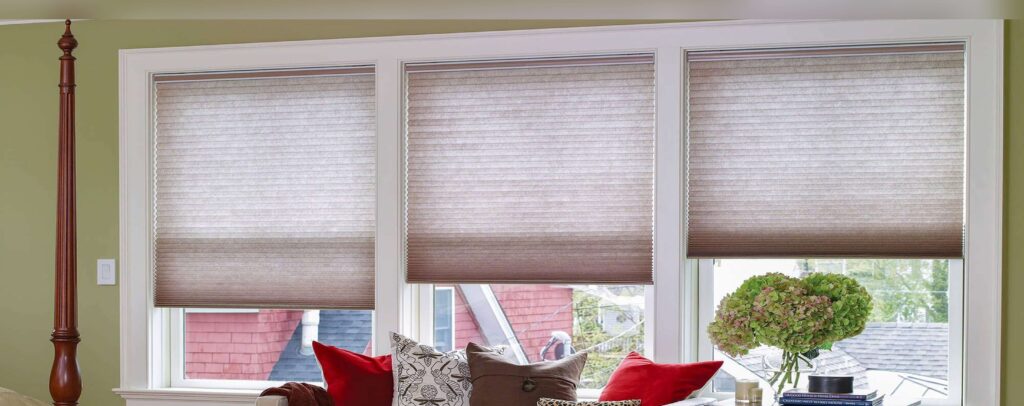
Best Rooms for Honeycomb Blinds
Living Rooms
A great choice for living rooms, which provide great insulation and help to regulate the temperature, thus making your space comfortable all year round. Their design is not only elegant and modern but also adds to the ambiance of any living area and provides privacy as well as light control.
Bedrooms
Honeycomb blinds offer excellent privacy for bedrooms; they block unwanted light and provide a soporific sleep environment. Their insulation properties keep your bedroom cooler in the summer and warmer in the winter and create a cozy atmosphere.
Home Offices
Honeycomb blinds are used in spaces where energy efficiency and privacy are priorities, such as home offices. The insulation maintains a comfortable temperature in the room, whereas the light control lets you adjust glare from the sun, thereby minimizing distraction to work in the room.
Nurseries
The honeycomb blinds’ noise-reducing features ensure privacy and a calm and quiet ambience in nurseries.
Kitchens
The vast range of colors and textures makes it easy to apply the design to your kitchen decor, while their low maintenance requirements make cleaning easy in a busy space.
What are Pleated Blinds?
Pleated blinds are well known for their clean and minimalist design. Made from a single piece of fabric that folds into pleats, they provide a simple yet stylish look. Pleated blinds are a universal option for any room because they are available in a lot of colors and materials. They provide good light control and access to privacy.
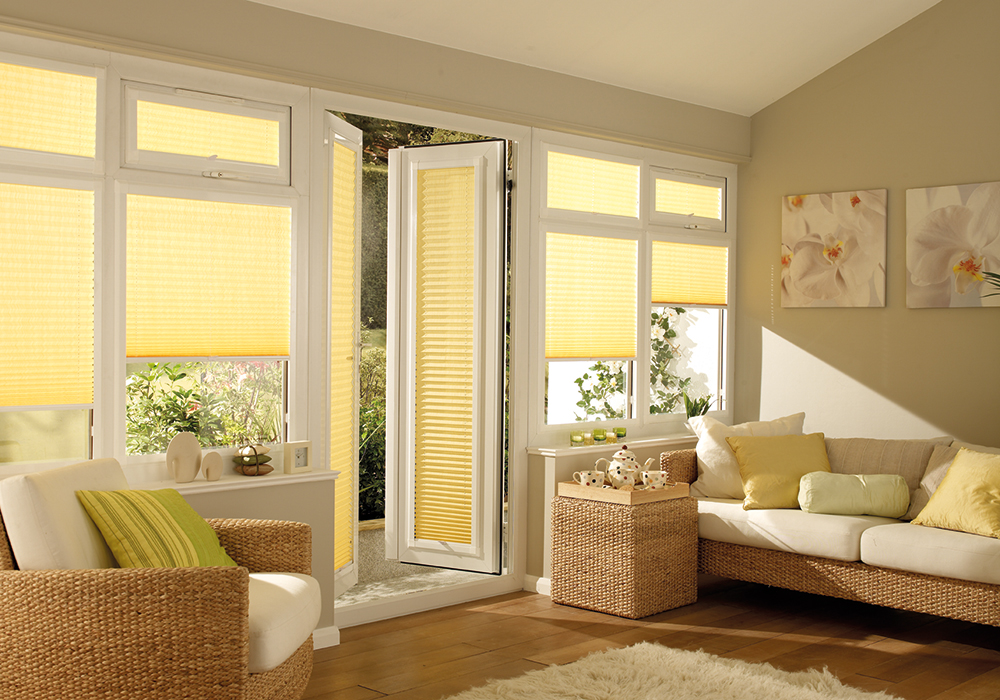
Benefits of Pleated Blinds
Affordability
Pleated blinds are much more affordable than honeycomb blinds, which makes them an ideal investment for homeowners who are interested in the quality of the window coverings without compromising on their budget.
Light Control
Pleated blinds do not offer as much light control as honeycomb blinds do, but there is still pretty good control of the light and privacy. You can adjust the pleats to let in the right amount of light.
Ease of Use
Pleated blinds are lightweight and can be easily operated. Their design is uncomplicated and easy to maintain,, requiring just a quick wipe-down to clean.
Drawbacks
- Insulation: Pleated blinds give some insulation, but they do not regulate temperature as honeycomb blinds do. They are better suited for rooms where insulation isn’t a top priority.
- Energy Efficiency: Although pleated blinds do have some energy-saving possibilities, they lag behind the better insulation provided by honeycomb blinds.
Cleaning Tips for Pleated Blinds
It is easy to maintain pleated blinds because they have a simple design. However, you must care for them properly to protect their aesthetics and functionality.
Dusting
A microfiber duster or a vacuum cleaner with a brush attachment can be a good option to wipe off the slats. Or you can just wipe the surface using a cloth to remove any dust.
Spot Cleaning
If any stains or spills are found on the blind, clean them using a wet cloth dampened in a mixture of mild detergent and water. Do not use any harsh chemicals or rough scrubbers that could damage the fabric or change the pleats’ shape.
Deep Cleaning
Pleated blinds cannot be machine washed, so a handheld steamer is a better tool to clean any stubborn dirt or wrinkles. Or with a damp cloth, you can wipe down the blinds using a small amount of detergent. Make sure to dry them properly after that.
Regular Maintenance of Pleated Blinds
- Carefully open or close the blinds to avoid top-heavy strain on the pleats.
- · Keep the blinds free from dust buildup to prevent them from becoming heavy and sagging over time.
- · Repeatedly check for wear or damage to the pleats and fix them in time.
Best Rooms for Pleated Blinds
Bathrooms
It is good to have pleated blinds in bathrooms because they combine a sleek, minimalistic design. They offer privacy while being resistant to moisture and humidity, so they are a good choice in damp places.
Kitchens
Pleated blinds are a great fit for the kitchen because they are easy to operate and easy to maintain. Their small size makes them ideal for small windows, and the variety of colors and fabrics enables you to find a style that matches the design of your kitchen.
Dining Rooms
Pleated blinds can give an elegant note to your dining room with their sleek, streamlined style. They come in many colors to help you find the perfect one for your dining space.
Living Rooms
Pleated blinds are an excellent choice for living rooms in which you want a modern, more minimal look. They have good privacy as well as light control, but still have the sleek look that complements modern interiors.
Sunrooms
Pleated blinds are especially well suited to conservatories or sunrooms if you need to regulate the amount of light let into your space. They offer an easy way to control the light levels while leaving the beautiful outdoors intact.
General Maintenance Tips for Both Types of Blinds
- Avoid Moisture: Both honeycomb and pleated blinds should be kept away from excess moisture. If they get wet, let them air dry naturally.
- Professional Cleaning: If professional cleaning of your blinds is needed, you may call in a specialist blind-cleaning service to have your blinds cleaned in a safe, efficient manner.
- Storage: When you do not use your blinds for a long period, carefully roll or store them in a protective cover to avoid dust or dirt buildup.
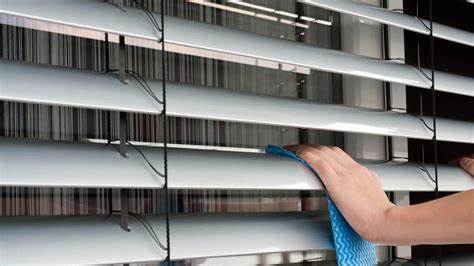
Honeycomb and Pleated Blinds: Which One Should You Choose?
Below are some qualities of both honeycomb and pleated blinds to help you choose a perfect fit:
Insulation and Energy Efficiency
When it comes to insulation and energy saving, honeycomb blinds are the obvious victor. If you’re looking to keep your home cooler in the summer and warmer in the winter, honeycomb blinds will make a noticeable difference in your energy bills.
Pleated blinds are appropriate for those people who do not require maximum insulation but still need moderate energy efficiency.
Light Control and Privacy
Both honeycomb and pleated blinds give you great control of the amount of light entering a room, and both give you a decent level of privacy. If you require full darkness or increased privacy, honeycomb blinds are the answer for you.
Aesthetics and Style
Pleated blinds have a sleek cut, and they are an ideal solution for minimalist or contemporary rooms. Those who wish to make a statement while making their homes more energy efficient would suitably do so with the help of honeycomb blinds.
Cost
If you’re in search of an affordable, posh solution that allows basic light control and privacy, pleated blinds may be what you’re looking for.
Honeycomb and Pleated Blinds at Shenglian Windeco
At Shenglian Windeco, we provide a wide assortment of honeycomb and pleated blinds for all homes and offices. Whether you are considering the energy-efficient benefit of honeycomb blinds or the chic, sleek, and minimalist look of pleated blinds for your windows, we are sure to have something to suit all tastes. There are a wide variety of colors, styles, and materials for our blinds, so you’re sure to find the right fit for your space.
Conclusion
Honeycomb and pleated blinds have different benefits, so their usage depends on what you want—superior insulation or light control, or the affordable one that still provides style and privacy. The range of honeycomb blinds is preferable for maximal energy savings and temperature control, and the pleated one is cheaper, yet quite functional. Weigh your needs and make the choice that’s right for you!
“Ready to turn your house into a cozy, energy-efficient home?” Discover our diverse range of blinds now and change your windows into something beautiful using the superior Shenglian Windeco’s blinds.
Contact us for a free consultation or to learn more about our products!”
FAQs:
How do pleated blinds differ from honeycomb blinds?
While honeycomb blinds have a cellular structure that provides superior insulation, pleated blinds consist of a single piece of fabric that folds into pleats. Pleated blinds offer a sleek, minimalist look but do not provide the same level of energy efficiency as honeycomb blinds.
Which blinds are better for energy efficiency?
Honeycomb blinds are better at energy efficiency because of their distinctive cellular structure that offers much better insulation.
Are honeycomb blinds more expensive than pleated blinds?
Yes, honeycomb blinds are typically more expensive than pleated blinds as they have advanced designs and better insulation properties.
Can I use both honeycomb and pleated blinds in the same room?
Indeed, you can mix both types of blinds in the same room. For instance, on smaller windows, you can use pleated blinds, and on larger windows that need better insulation, you can go for honeycomb blinds.
Which type of blinds is better for larger windows?
Honeycomb blinds are superior for bigger windows simply because they offer better insulation and light control, and therefore this makes them a good choice for bigger glass areas.

